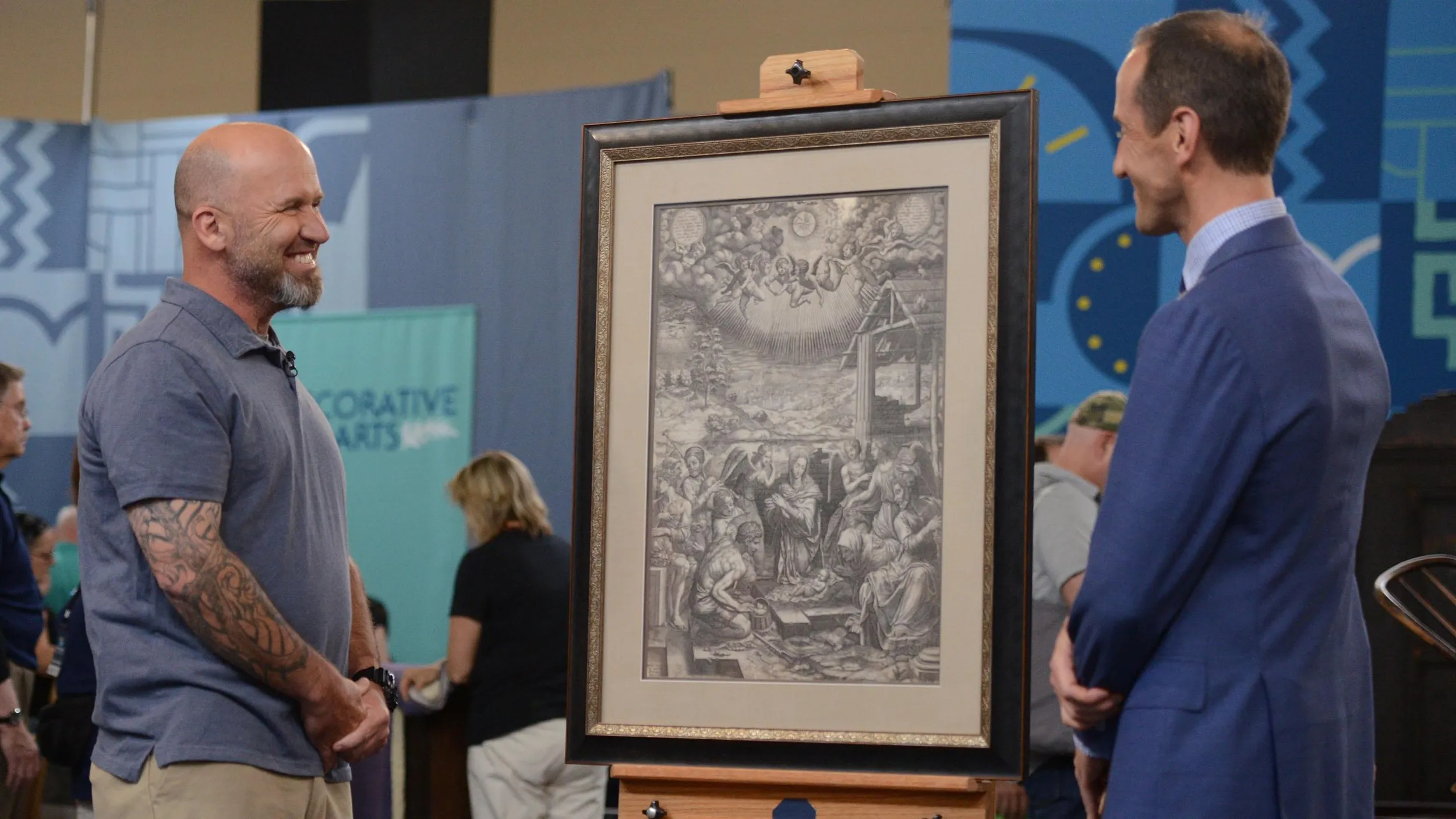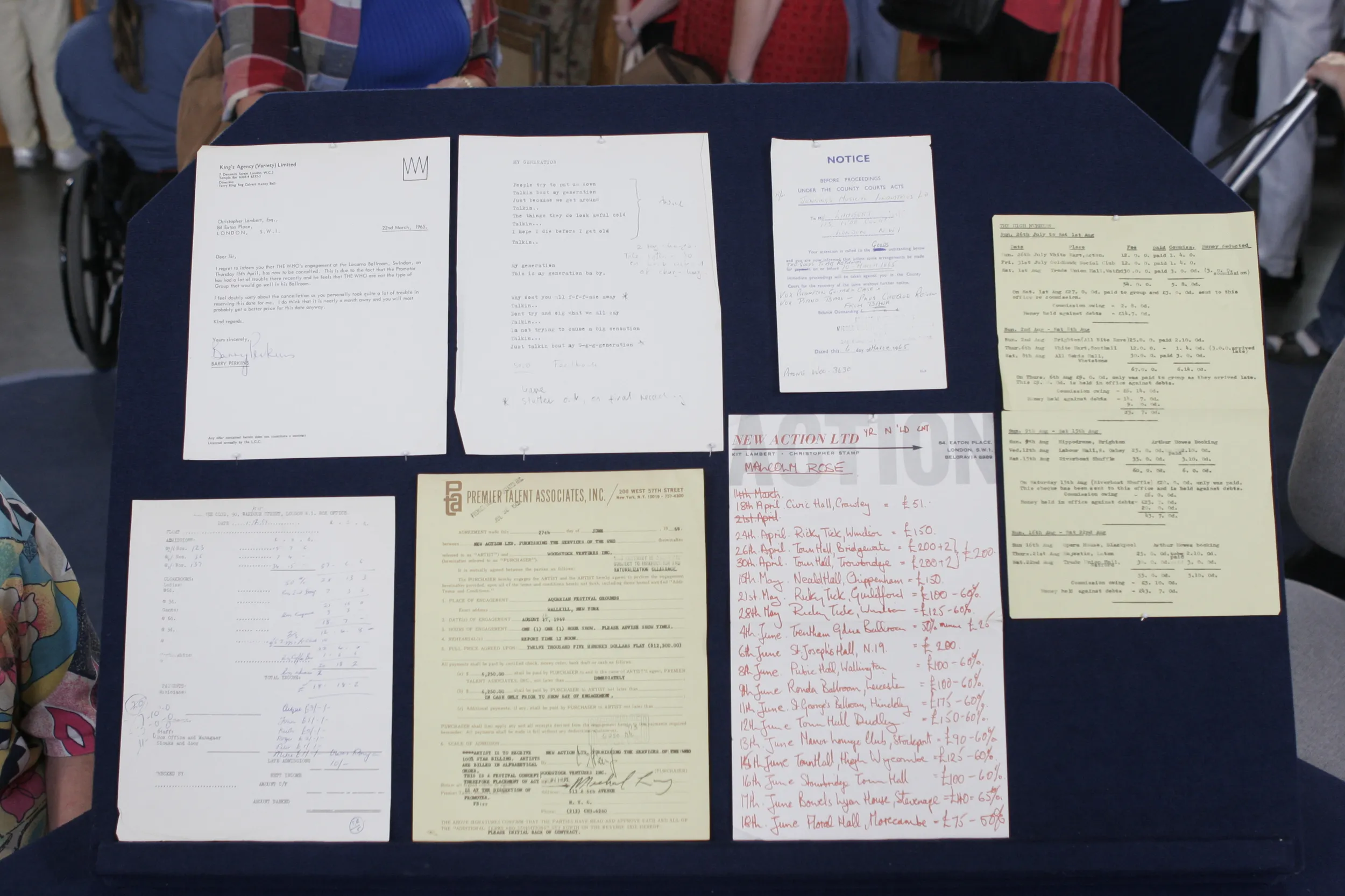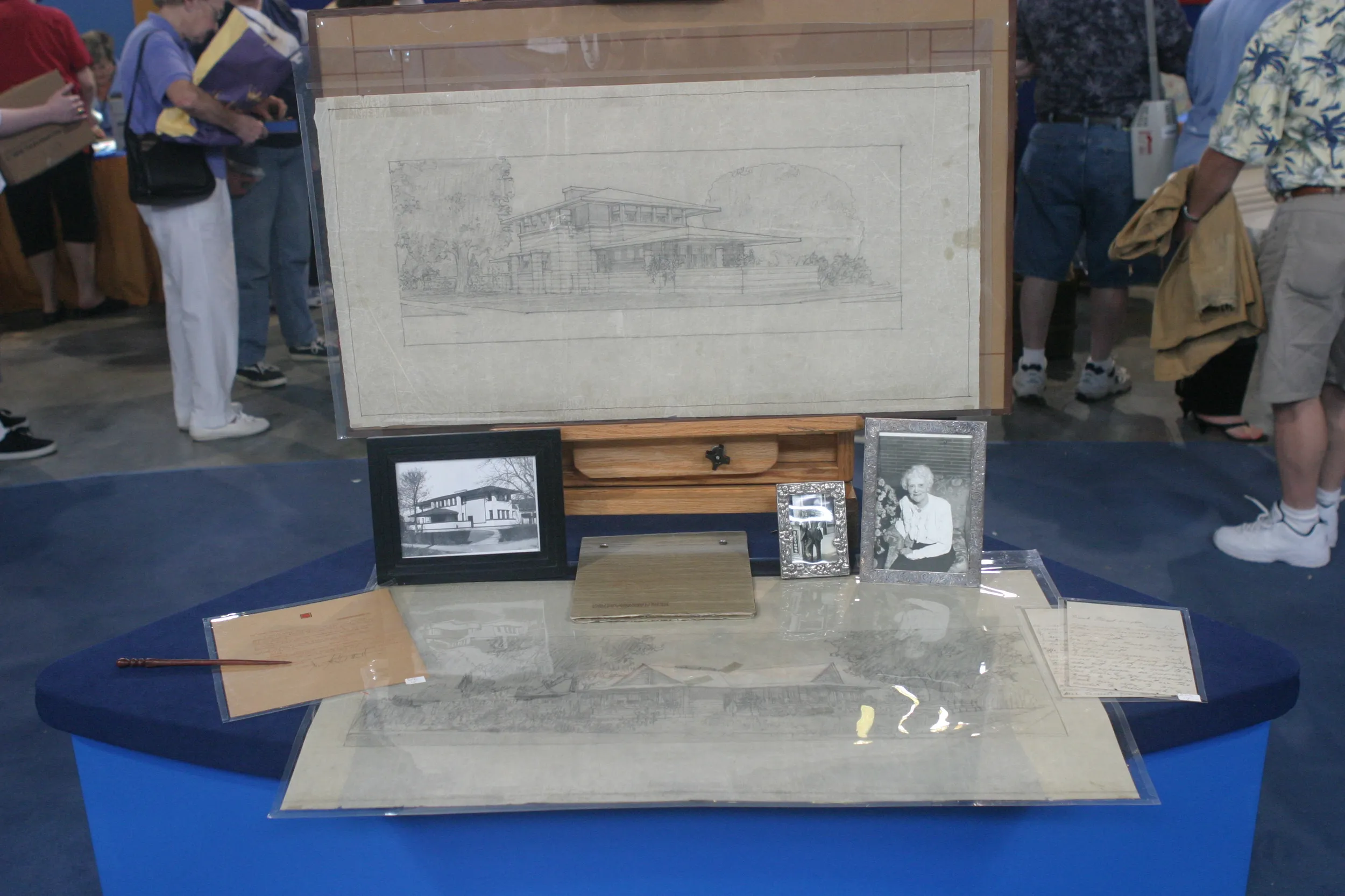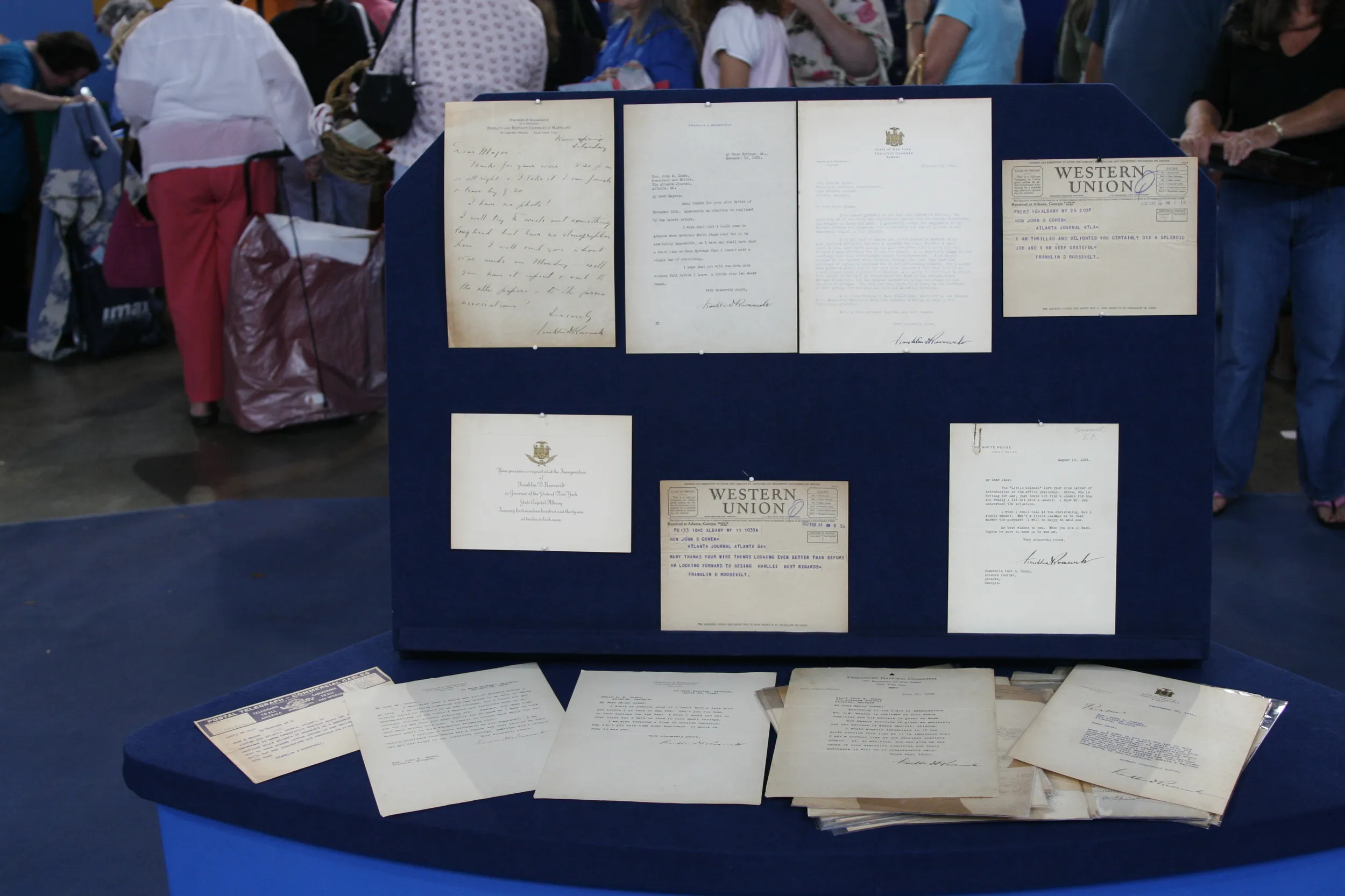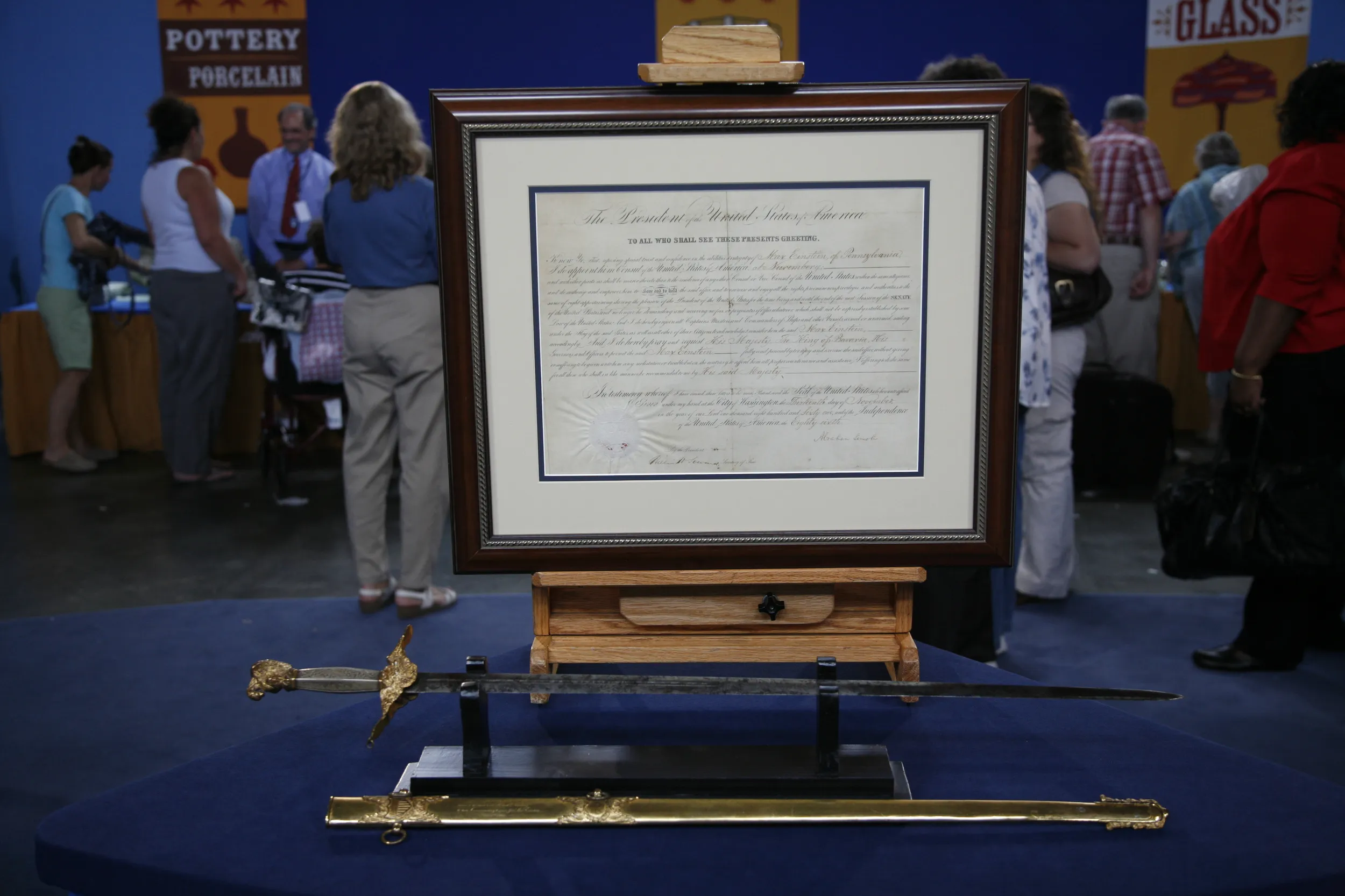GUEST: This is a piece of the antenna from the space capsule from John Glenn when he orbited the Earth. And I have it because my grandfather was the captain of the ship the Noah that picked John Glenn up out of the ocean. It's interesting because his ship was not supposed to be the one to pick him up. They had, I think, three different crews in place. And just depending on how it orbited and whether he overprojected or underprojected, and actually the ship that was supposed to pick him up was a little bit slower, and there was a big competition between them. And so my grandfather's ship and all of his crew, they were really into it and making sure that they were the fastest ones to go, and they got to pull him out, as well as the capsule out. And so he was given a piece of the antenna as a part of a thank you. And this is a recognition, a proclamation recognizing the fact that he was that ship captain. And here's a picture of my grandfather, Captain John D. Exum, with John Glenn.
APPRAISER: That's great. This was the flight that orbited the Earth in 1962, and it was the first manned orbital flight for the United States. John Glenn was actually the third man to go into space for the United States. The ship itself is in the Smithsonian Institution.
GUEST: Right.
APPRAISER: So that's on display there. I did a little bit of research and couldn't find any other pieces from this particular ship ever coming up on the market. To me, what's fabulously interesting is that this was the first manned orbital that the United States ever put up there. So for all intents and purposes, John Glenn is... He is one of the most historic men in American history. The proclamation, which is right here. And you can see, it's given to the commander, John Exum. So that ties in the provenance and the history of the piece. The plaque describes exactly what it is, part of the antenna. And the photo just puts it all into one big package and ties it up, showing John Glenn on his ship after the rescue. So it's really a terrific grouping. Rule of thumb nowadays is, whatever goes up into space and comes down from space, that's part of a space flight, goes for big money.
GUEST: Okay.
APPRAISER: It really does. Generally, as an auctioneer, I always kind of put things into auction terms and then insurance terms. Conservatively, and I did speak to some of the other appraisers here, and they were very, very excited about the piece. I would probably put an auction estimate-- and again, being conservative-- at $30,000 to $50,000.
GUEST: Oh, my goodness!
APPRAISER: And if you're going to insure it, I would probably put an insurance value more than that, maybe at $60,000 or so. Because again, I'm finding small pieces-- knobs and handles from different flights much later-- going in the $10,000, $20,000, $30,000 range or more. So this is just a really phenomenal piece, and from one of the most important flights in space history.
GUEST: That's pretty crazy, because until I was about 25, I used to walk past this in his hallway, and I had no idea. Didn't think anything of it.
APPRAISER: Mm-mm.

